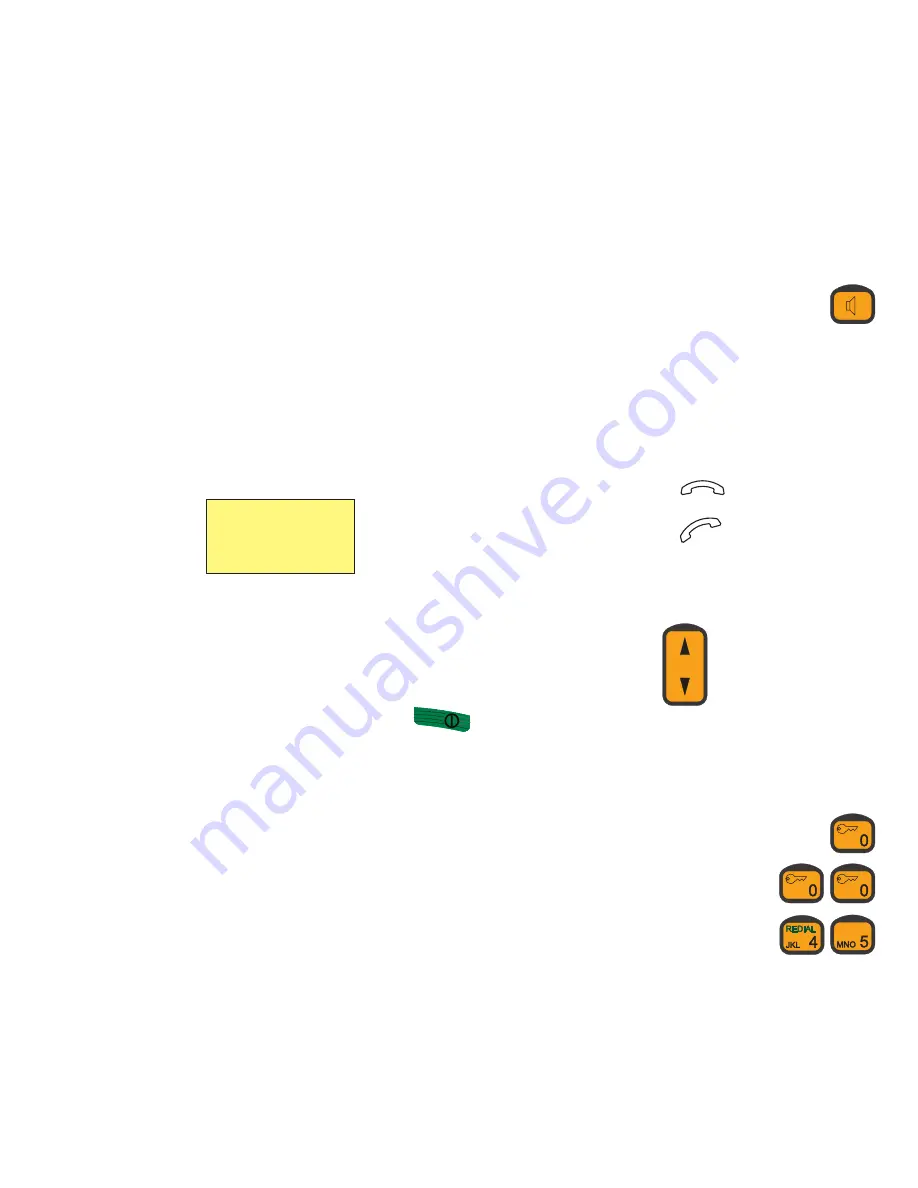
3
Handset Simple Operation
To the Iridium system you can connect up to five handsets.
A handset can be in one of two states: active or disabled.
Handset States
In each of the two states, the handset’s normal display and signalling
can be described as follows:
Disabled State:
•
The display is cleared and the light is off.
•
The indicator lamp on/off is flashing briefly every 5 seconds.
Active State:
•
In the active state, the user can choose the information shown
on the display. An example:
•
The indicator lamp on/off is on.
Handset on/off
To turn the handset on/off:
1.
Press and hold the on/off button.
2.
Wait until you hear the continuous tone signalling or see that the
indicator lamps on/off, call and in use are turned on simultane-
ously.
3.
Release the on/off button.
Call Functions
Speaker, Earpiece and Microphone
The earpiece is always turned on. The speaker and microphone are
always in opposite states, i.e. if the speaker is on, the microphone is
off, and vice versa.
You can toggle the speaker and microphone states by
means of the speaker key. The speaker icon appears on
the display when the speaker is on, and disappears when
the microphone is on.
Hooking on/off
Before a call can be initiated, the handset must be hooked off. To do
so, either remove the handset from the hook or use the on/off-hook
key.
The handset icon on the display shows whether the handset has
been hooked on or off.
Hook on
Hook off
Volume
During a conversation, the speaker and earpiece volume can be
adjusted by means of:
Manual Telephone Call Syntax
For external calls, entering a telephone number on the handset
follows the syntax of this example:
1.
External call
0
2.
Prefix for automatic call
0 0
3.
Country code, e.g.
4 5
Ready
01.01.1999
23:59:59















